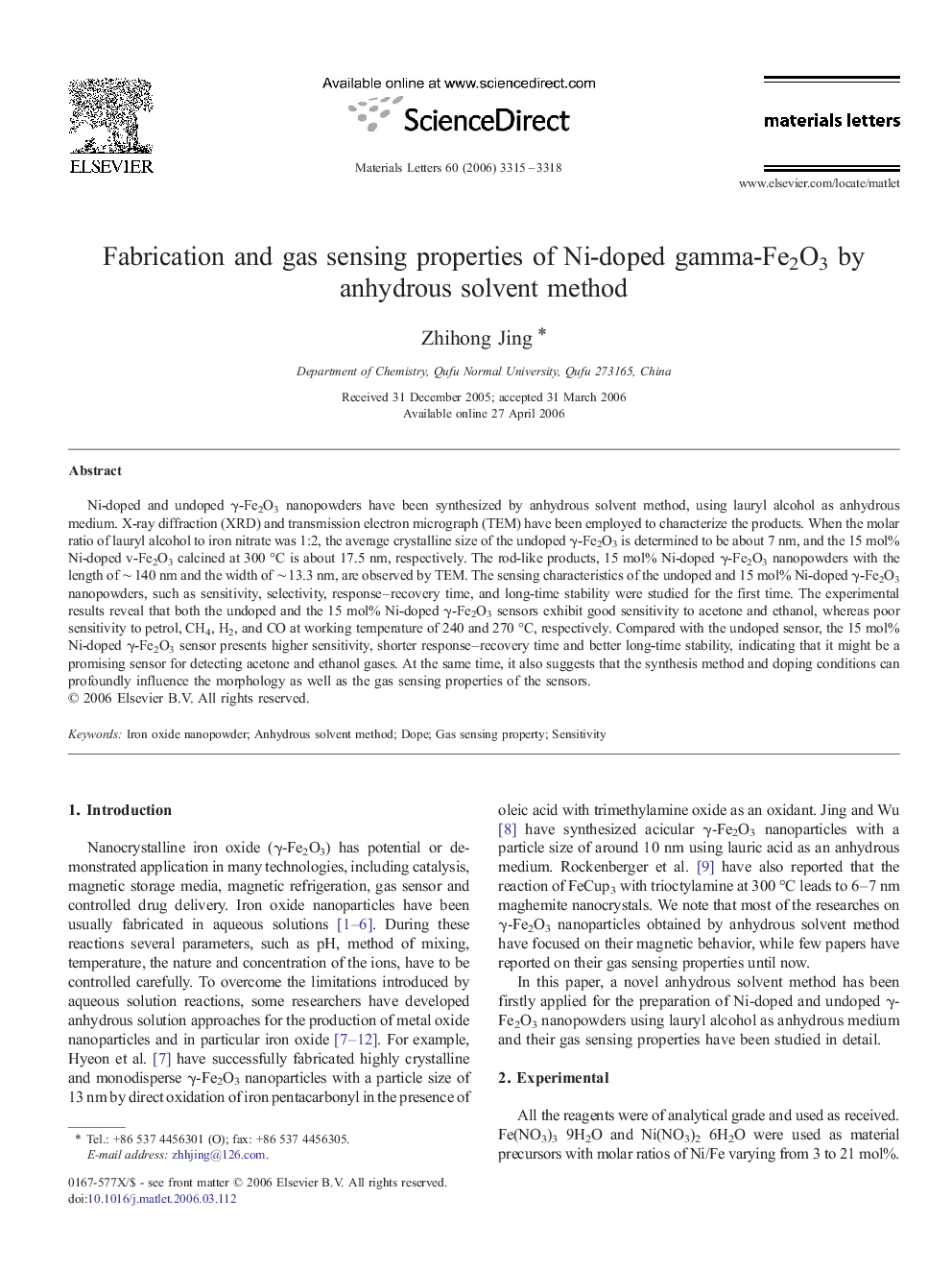| Article ID | Journal | Published Year | Pages | File Type |
|---|---|---|---|---|
| 1653261 | Materials Letters | 2006 | 4 Pages |
Ni-doped and undoped γ-Fe2O3 nanopowders have been synthesized by anhydrous solvent method, using lauryl alcohol as anhydrous medium. X-ray diffraction (XRD) and transmission electron micrograph (TEM) have been employed to characterize the products. When the molar ratio of lauryl alcohol to iron nitrate was 1:2, the average crystalline size of the undoped γ-Fe2O3 is determined to be about 7 nm, and the 15 mol% Ni-doped v-Fe2O3 calcined at 300 °C is about 17.5 nm, respectively. The rod-like products, 15 mol% Ni-doped γ-Fe2O3 nanopowders with the length of ∼ 140 nm and the width of ∼ 13.3 nm, are observed by TEM. The sensing characteristics of the undoped and 15 mol% Ni-doped γ-Fe2O3 nanopowders, such as sensitivity, selectivity, response–recovery time, and long-time stability were studied for the first time. The experimental results reveal that both the undoped and the 15 mol% Ni-doped γ-Fe2O3 sensors exhibit good sensitivity to acetone and ethanol, whereas poor sensitivity to petrol, CH4, H2, and CO at working temperature of 240 and 270 °C, respectively. Compared with the undoped sensor, the 15 mol% Ni-doped γ-Fe2O3 sensor presents higher sensitivity, shorter response–recovery time and better long-time stability, indicating that it might be a promising sensor for detecting acetone and ethanol gases. At the same time, it also suggests that the synthesis method and doping conditions can profoundly influence the morphology as well as the gas sensing properties of the sensors.
